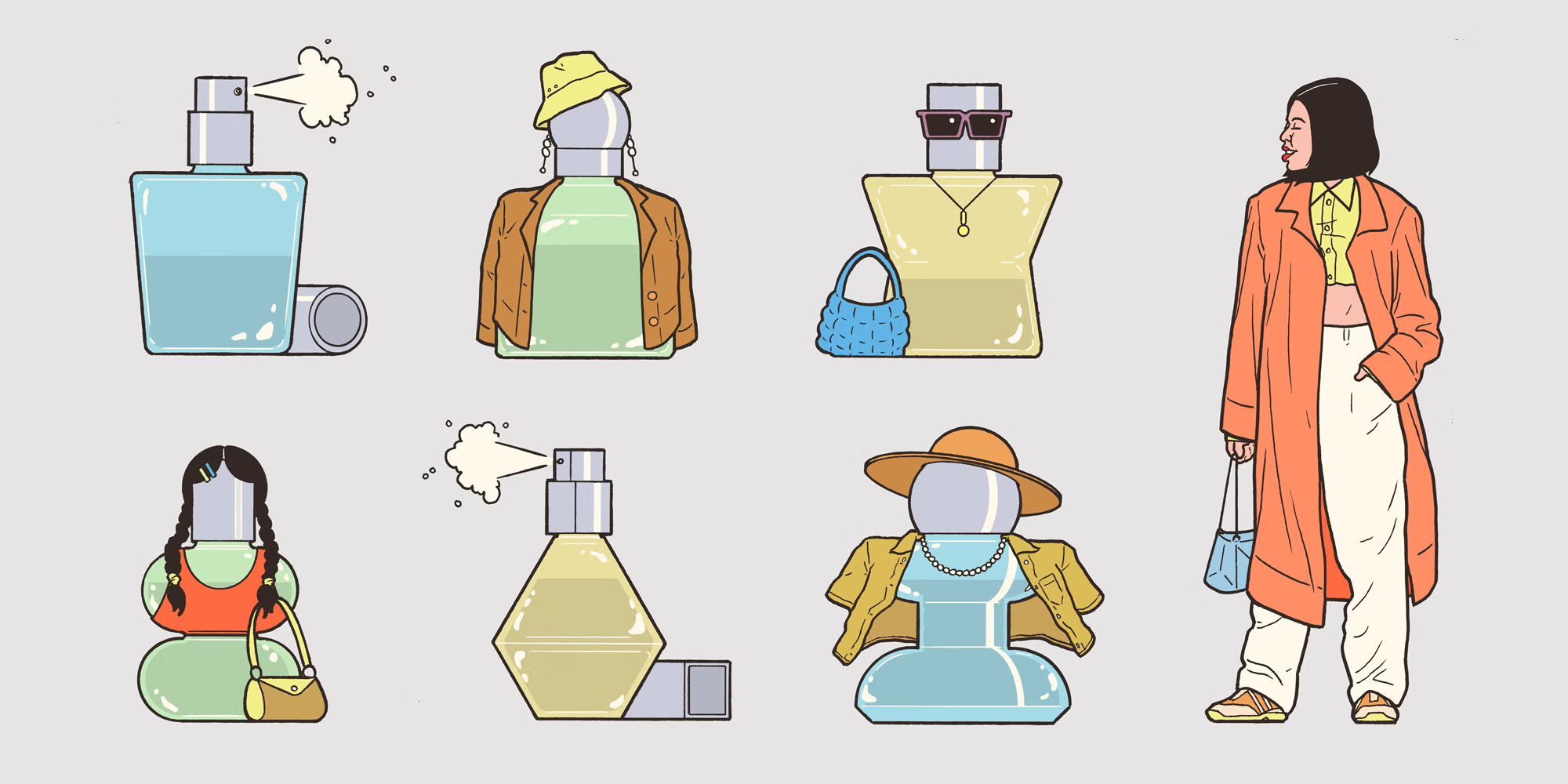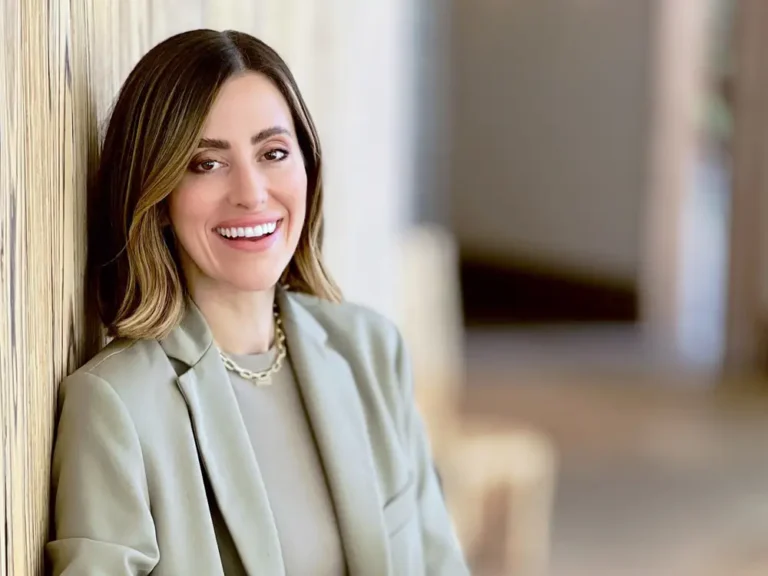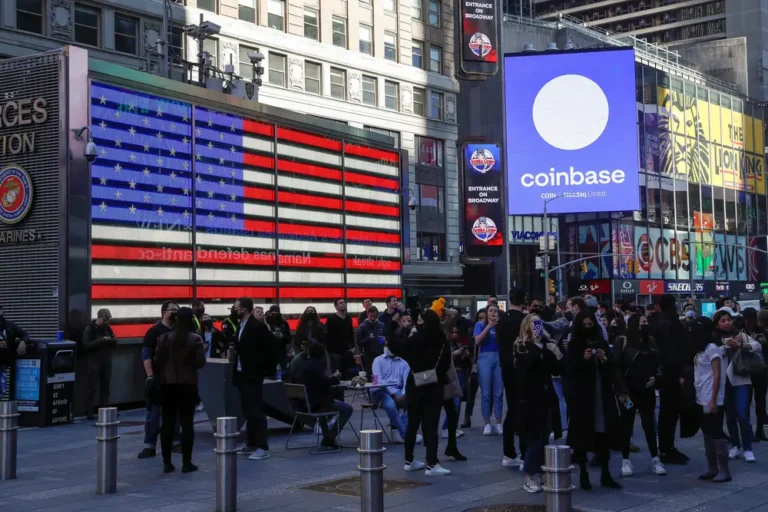Smells like teen spiritInside Gen Z’s obsession with luxury fragrances

Julia Dovgal has always loved smelling good. As a child, she would douse herself in her mother’s Chanel or Dior scents before going to school or meeting friends. For her birthday in 2017, she received her first “luxury” fragrance: Jo Malone’s $165 bottle of Wood Sage and Sea Salt. The 29-year-old’s collection has since grown to over 200 bottles.
At first, Dovgal was into designer fragrances like the ones her mother owned. “Then I discovered niche perfumery,” she tells me. She’s constantly on the hunt for perfumes with notes of vanilla and sandalwood. Dovgal says she spends about $600 a month on her collection, which she reviews on TikTok. “I want to have them all,” she says.
Now a full-time content creator, Dovgal is far from the only young person driving a perfume renaissance. The market-research firm Circana says sales of luxury fragrance brands in the US grew by double digits in 2023. From 2021 to 2023, the size of the so-called prestige fragrance market increased by nearly $2 billion, to $8.3 billion, prompting a flood of new scents and brands.
Behind the booming appetite for new smells is Gen Z. The generation has graduated from Victoria’s Secret body mists and is desperate for something fancier. Circana found in 2023 that 83% of Gen Zers said they used fragrance, compared with 79% of Gen Xers and 69% of boomers. It’s not just the women either: A recent survey on consumer spending by the investment bank Piper Sandler found that fragrance spending among teen boys had increased by 26% since the spring of 2023. Longtime favorites — Axe, Old Spice, and Bath & Body Works — have been replaced by brands like Valentino and Jean Paul Gaultier. The boys’ locker room today smells less like a boys’ locker room and more like the sales floor of Saks.
Perfume is no longer an afterthought sprayed on while running out the door; it’s part of Gen Z’s personal brand. “Clean girls” might be wearing Maison Margiela’s Replica Bubble Bath, a “quiet luxury” queen might give off the rich floral scent of Maison Francis Kurkdjian’s Baccarat Rouge 540, while a “coastal grandmother” might douse herself in the woody notes of Byredo’s Gypsy Water. Instead of picking one signature scent, young people are increasingly cycling through aesthetics. For Gen Z, it’s all about the scent wardrobe.
When e-commerce took off, the perfume industry smelled trouble. How are people supposed to know what scent they’re buying if they can’t spritz it through their screen? For a long time the industry tried to avoid online shopping, prioritizing classic scents and in-store sales. But when everything moved online during the pandemic in 2020, US fragrance sales dropped by 21%. Marketers used increasingly complex descriptions and illustrations of scents, but it was still an uphill battle.
Around 2022, TikTok changed the game. Creators on #PerfumeTok touted their favorite scents, painting a picture for their followers of what they smelled like. Viral posts have caused fragrances to sell out. Phlur said its Missing Person fragrance — the subject of TikTok videos with more than 50 million views — sold out within hours of its launch and amassed a 200,000-person waiting list. Curious about what it smells like? “You know when you’re cuddling with someone that you really love, and you’re, like, nuzzled up in their chest and you look up at them?” one creator said in a clip that’s been viewed 1.7 million times. “It smells like that.”
If there’s one thing Gen Z loves, it’s a name for something.
Circana found that 45% of people who bought perfume in 2022 said that TikTok influenced them. Instead of buying a scent based on smell, young people have started making purchases based on influencer recommendations. “This is the type of fragrance for when you need to impress for a first date or a special-occasion event,” Dovgal says in one of her most viewed TikToks. Under the handle @juliaperfumery, she shares perfume reviews for her primarily Gen Z audience against the backdrop of her New York City apartment’s perfume closet. Each month she’ll choose five or six fragrances to rotate through. “Perfume depends on the season and on the weather,” she tells me. At the moment, her favorite brand is Juliette Has a Gun — she has almost all of the French label’s fragrances.
To address the issue inherent in online perfume reviews — people can’t smell through the screen — PerfumeTok creators got creative. Their posts are often miniature personal essays designed to evoke emotions and memories.
“I have to communicate with your other senses to try and paint a picture of this fragrance for you,” says Emelia O’Toole, who posts to her nearly 400,000 followers on TikTok under the handle @professorperfume. “We really lean into these dramatic, often long-winded descriptions of perfumes because it’s what sets the scene. We have to put an image in your head instead of a smell.” A viewer may not know what rose, lychee, and oud smell like, but they can imagine what an elegant woman in a long evening dress out on an evening in New York might, she says. “There’s been a shift from classical perfume terminology to a more creative way of communicating with the senses,” O’Toole adds.
Part of the shift is a growing interest in wearing scents that fit a specific aesthetic, mood, or brand. “If there’s one thing Gen Z loves, it’s a name for something,” O’Toole says. Niche identities based on beauty fads have blossomed, especially on TikTok. If you’re a tomato girl, you probably have a bright rosy shade on your lips and cheeks to emulate a Mediterranean sunburn. Vanilla girls have glowy skin and smell of expensive hand cream. A mob wife, on the other hand, dons a fur coat while sporting dark eyeliner. “We’ve gone in a circle, from wanting to move away from labels to wanting to hyperspecifically label everything,” O’Toole says.
This has encouraged what she calls a scent wardrobe. Years ago, someone’s perfume collection may have included a day scent and a night scent, or perhaps a summer scent and winter scent. Now there’s a scent for every occasion, mood, and scenario. There are back-to-school scents, scents to win your ex back, scents to smell like Vanessa Paradis in Paris in the ’90s — the list goes on. While not every Gen Zer can boast a collection of hundreds of perfumes, there is an evident appetite for more. Piper Sandler’s survey found that fragrance spending among teens had grown by 25% since last year.
Cathrine Jansson-Boyd, a professor of consumer psychology at Anglia Ruskin University in the UK, connects the shift away from a signature scent with a weakening sense of identity. “The more time you spend online, the more you want to change how you represent yourself,” she says. “You never really establish a proper sense of self.”
You can say, ‘Who do I feel like being today?’ and just spray that on.
She also pointed to mass-consumption culture — the increasing ease and convenience of buying an exponentially growing number of cheap products — as a contributing factor. The fast-fashion retailer Shein, whose clothing prices rarely top $50, is incredibly popular with Gen Zers, for instance. “With all these choices in terms of consumption, you don’t get this full, internalized anchoring of who you are,” Jansson-Boyd says. It’s all about who Gen Z wants to be.
That could be why certain companies have taken off recently. Nuuly, a clothing-rental subscription service launched in 2019 by Urban Outfitters, allows young people to cycle through new clothes each month and try out different styles without too much of a commitment. Last year the brand reached profitability, and this year it said in the second quarter that its “average active subscribers” had grown by 50% year over year.
For O’Toole, experimenting with aesthetics is part of the fun. “I think that’s one of the most beautiful parts about wearing a fragrance,” she tells me. “You can say, ‘Who do I feel like being today?’ and just spray that on.”
For a long time, perfume was used to communicate status and wealth. For many, it was a form of affordable affluence — a way to secure their status even when the economy was bad. You may not be spritzing it from your château in the Riviera, but with Chanel No. 5 you could at least smell like Marilyn Monroe, Catherine Deneuve, or Nicole Kidman. For Gen Z, however, the most coveted scent isn’t always the most expensive one.
With the emergence of niche independent perfumers and the increasing availability of affordable fragrances, signaling status is not just about having the money to splurge on designer fragrances — it’s about being in the know. While most will recognize Chanel No. 5 on the street, only a few can put their finger on the notes of cardamom, fig, and black tea of BDK’s Gris Charnel. A niche scent affords wearers an opportunity to stand out from the crowd while signaling that they have good taste — an inescapable paradox that Jansson-Boyd describes as part of being human. Who exactly you choose to signal to depends on your priorities: Out at a bar, you might sniff out a fellow horse girl or someone with rockstar-girlfriend energy and experience a fleeting moment of connection.
For Gen Z, it’s not enough for a fragrance to smell good — it has to make them feel something. By its very nature, perfume taps into this idea. The power of scent on our emotions can be traced back to ancient times; research suggests smells evoke emotions that can help reduce stress and depression. Amid a booming wellness industrial complex, fragrances are increasingly being marketed as self-care tools. Take Bella Hadid’s Orebella fragrances, which incorporate “aura enhancing” essential oils, for instance. Or Gabar, the London-based brand that says its mission is “to encourage ideas of self-expansion and self-awareness through scent and everyday rituals.”
“Nowadays people are looking beyond wholly utilitarian concepts and are looking to their beauty products and rituals to cultivate a sense of intentionality in their lives,” says Susan Wai Hnin, Gabar’s chief operating officer and global director. “This convergence of the worlds of beauty and wellness have resulted in the rise in popularity of mood-boosting products — people are looking to feel something when they use their products.”
The wellness angle — as opposed to the old-school sex-appeal marketing, which has fallen out of favor with the “puriteen” generation — is especially appealing to younger consumers. Through a more holistic approach, fragrance is firmly embedding itself in Gen Zers’ daily wellness routines.
If their perfume isn’t getting them chased down the street, lifting their mood, and signaling a unique-but-not-too-unique aesthetic, Gen Zers will turn their noses up.






